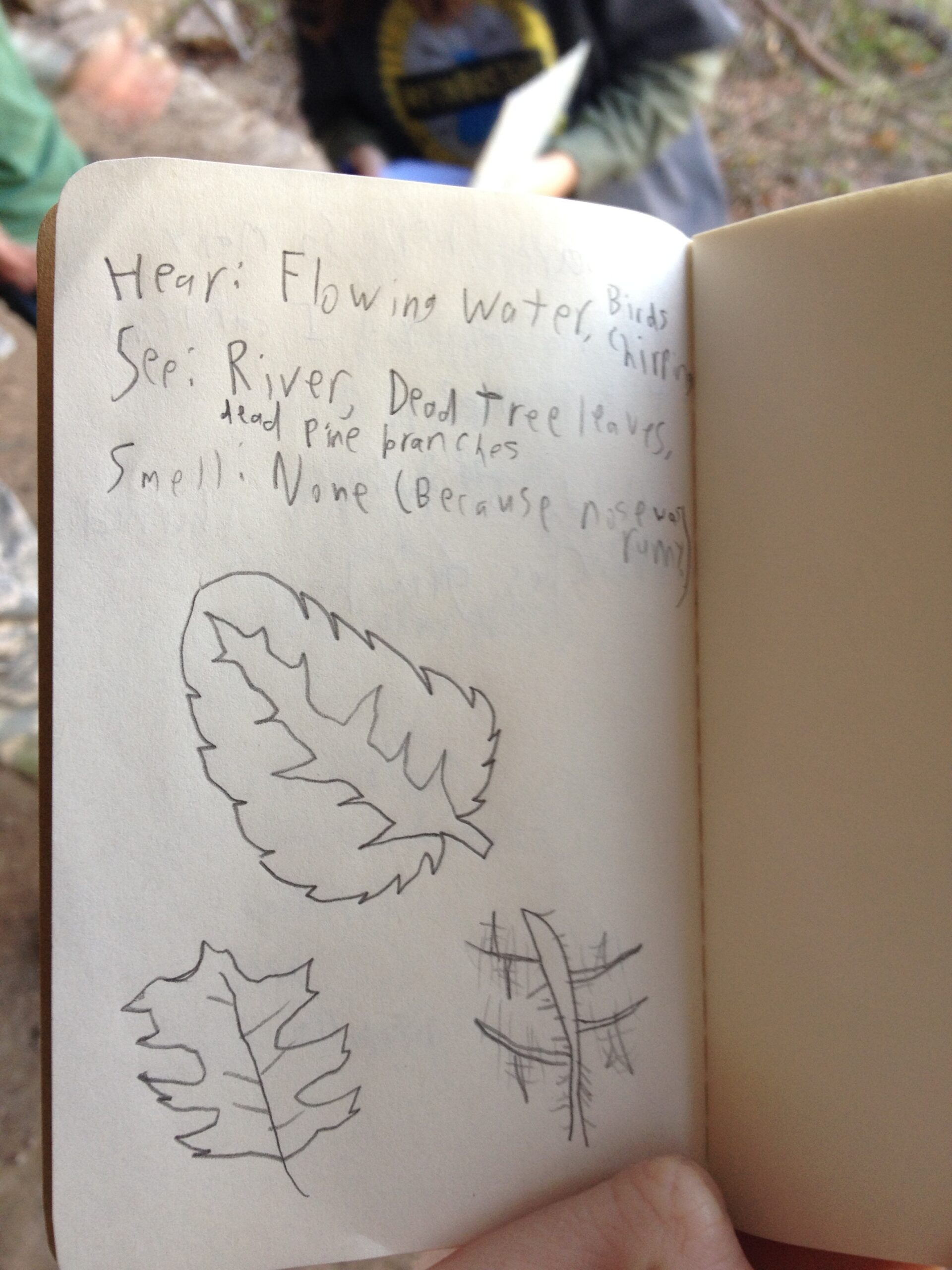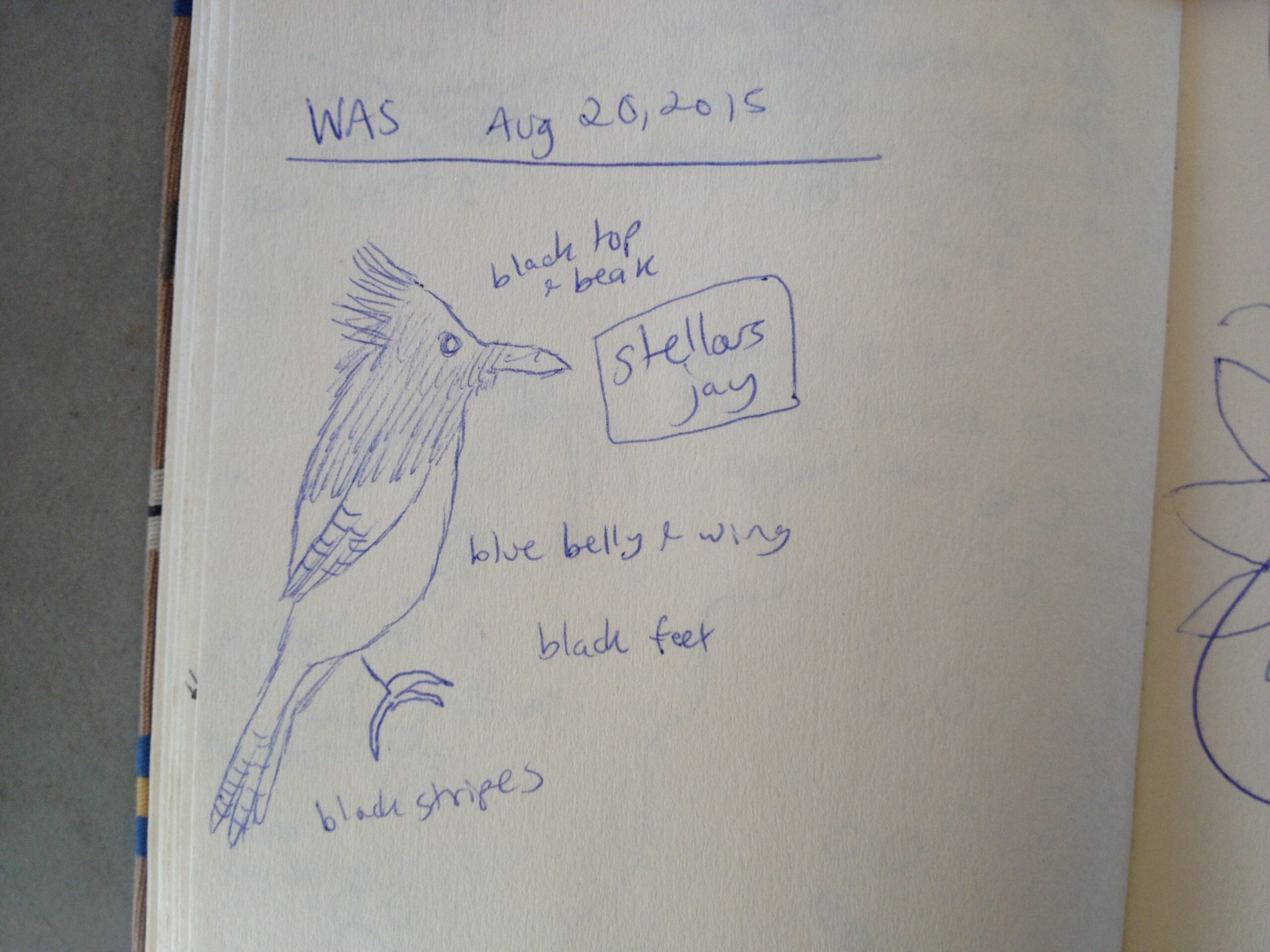Nature School Project: Nature Journals
For the first time this year, Martin does not want to go to Goose-eye Wilderness School on Thursday – and it is simply because they are going to be working with journals. Momma asks him why this is a problem and he admits that he is worried the others will be way ahead of him with reading and writing and he doesn’t want them to make fun of him. But between Momma’s advice and Troy, the apprentice’s wise short story, he feels much more confident that when it comes to reading and writing, everyone is ready… when they are ready.
We are joined today by Mike DiMauro who is a wilderness teacher for Earth Native Wilderness School. He has created a great tutorial for Sparkle showing how to keep your own nature journal just like Martin.
(This nature school project accompanies the Martin & Sylvia Nature School story,”Nature Notes“.)

The Nature Journal is a fun and educational way to interact with the natural world! It gives us a place to record what we see, hear, smell, feel, and even taste through the changing seasons and challenges us to pay more attention while we are in nature. A nature journal will put you on a fast track towards being a master naturalist, ecologist, botanist, zoologist, ect. by fostering a deep curiosity and joy for the natural world.
Materials:
pencil
a notebook
ziplock bag to keep things dry
Additional materials can include color pencils, crayons, markers, a ruler, sketch paper, or grid paper.

How to keep a Nature Journal:
There are no rules for keeping a nature journal, the important thing is to make it fun and educational for you. If this means drawing or sketching, then great! Maybe writing is a better fit for you? A popular method is by using a combination of writing and drawing. There are many things to focus on: trees, plants, animals, animal tracks on the ground, clouds, ect. If it feels more comfortable, begin by using pieces of nature that can be easily traced, like a tree leaf.
To make it feel more like a journal, and to get the benefits of being able to look back and notice changes in the seasons put the date on the top of each page.
Other additions you can add:
the season, the time of day
a marker pointing north
a note on the weather
current cycle of the moon

As you become more comfortable journaling, areas of study can be more detailed. You can create sections of the journal devoted to specialized subjects of study like trees or animals. Taking advantage of field guides and internet research, in combination to what is seen first hand in nature, is advised to create more detailed journal entries that can include the specie’s habitat range, size, behaviors, ecosystem, fun facts, and more.
Follow the species through the cycle of the seasons, drawing the tree buds in the winter, the emerging leaves in the spring, the flowers in the summer, and the fruits in the fall, for example.

If you have younger children who can’t write yet or who are just starting out, like Martin in the story, feel free write just the date for them or help them spell the words they want to write.
Below is an exercise you can try if you are ready to start working in your nature journal.
Journaling Activity 1: Mapping
Find a familiar place to sit, in your backyard or in a local park. Take a moment to become present and to soak in the environment through all of your senses.
In the center of your paper draw a mark to symbolize you and draw an arrow in one of the corners that points north. Next, draw or write the location of major landmarks that surround you like a stream, human trails/walkways, and large trees. And finally add in more subtle details like plants or shrubs, animal tracks/trails, human made influences, and open areas.
Allow the scope of your map to range from ten feet to several hundred yards, depending on your vantage point. This exercise will give you a starting point for identifying and studying the plants and animals which live around you. Go to this same place often to journal and study what you see.
About the authors
-

Mike DiMauro
Mike DiMauro is a Nature Mentor at Earth Native Wilderness School facilitating programs for all ages of youth. The school is located in the Austin, TX area and focuses on youth nature connection education through weekly, monthly, weekend, and summer camp programs. Mike spent 6 years living in the woods of Maine studying nature and wilderness skills before moving to Texas in March 2015.



